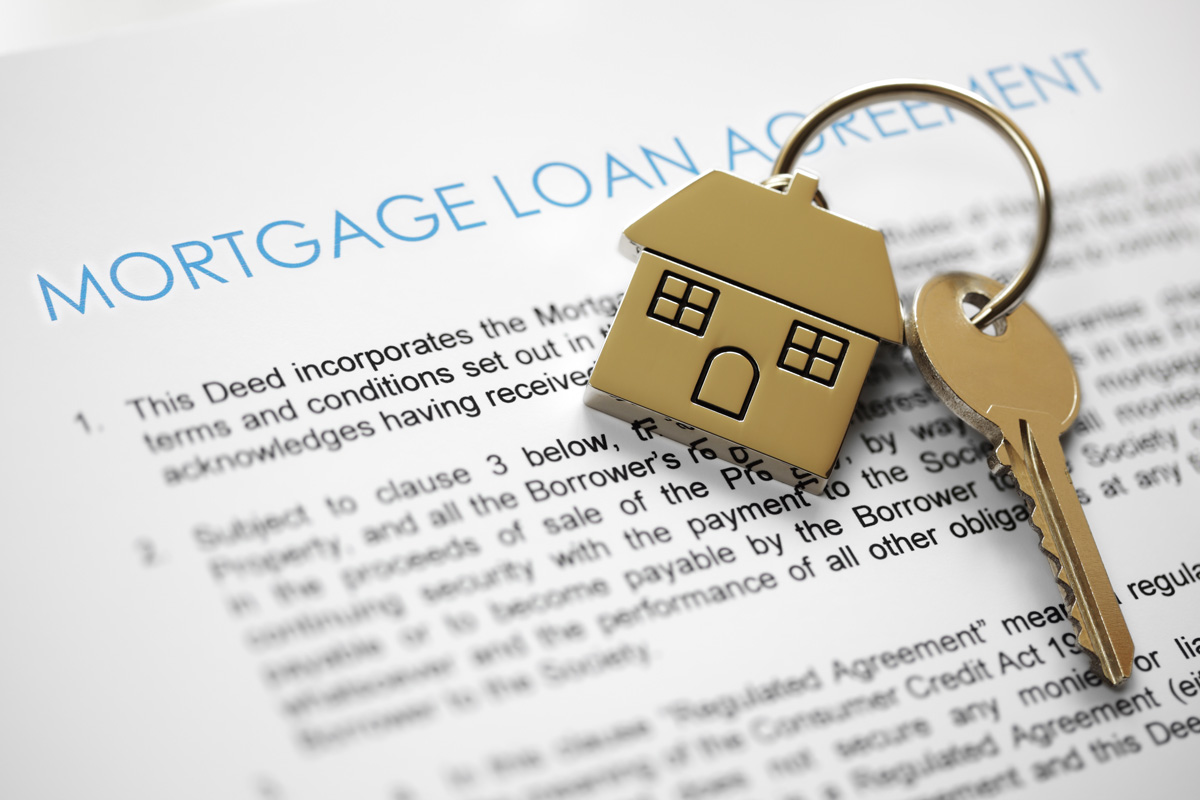Optimize Your Homebuying Possible with Conventional Mortgage Loans
Optimize Your Homebuying Possible with Conventional Mortgage Loans
Blog Article
The Essential Aspects to Consider When Deciding On In Between Fixed-Rate and Variable-rate Mortgage Loans
When examining home mortgage options, customers deal with a crucial decision between adjustable-rate and fixed-rate loans, each providing prospective risks and distinctive benefits. Trick factors to consider such as interest rate security, predictability in month-to-month payments, and the implications of potential price modifications can dramatically impact long-lasting monetary wellness. Furthermore, comprehending the anticipated duration of homeownership and the total expense of borrowing can shape one's approach. As these elements intertwine with individual economic scenarios and run the risk of tolerance, the ramifications of this choice might not be as uncomplicated as they appear. What nuances should be focused on in this important decision-making process?
Rate Of Interest Security
When selecting a home mortgage, recognizing rate of interest price stability is critical for notified decision-making. Interest rates can substantially influence the general price of a home mortgage, and identifying the nature of these prices is necessary for debtors.
On the other hand, adjustable-rate mortgages (ARMs) start with lower preliminary rates that might alter periodically based upon market conditions. While this can result in lower payments initially, it also presents unpredictability, as consumers might encounter raised settlements if rate of interest prices climb. For those taking into consideration an ARM, it is important to examine the probability of price changes, the capacity for payment rises, and the length of the preliminary fixed-rate period.
Inevitably, the selection in between adjustable-rate and fixed-rate home mortgages depends upon individual risk tolerance and monetary circumstances. Understanding rate of interest rate stability aids debtors make informed decisions that line up with their long-term economic goals.
Month-to-month Payment Predictability
While borrowers usually prioritize rates of interest stability, the predictability of regular monthly settlements is similarly crucial in the mortgage choice procedure (Conventional mortgage loans). Monthly payment predictability plays a critical role in budgeting and monetary planning, as it straight influences a property owner's capital and general monetary health and wellness
Fixed-rate home mortgages provide a regular month-to-month payment throughout the life of the lending, enabling consumers to anticipate and prepare their costs successfully. This stability can be especially useful for new property buyers or those on a set earnings, as it gets rid of the unpredictability connected with fluctuating repayments.
On the other hand, adjustable-rate mortgages (ARMs) typically include lower initial payments that can alter in time, bring about potential irregularity in regular monthly responsibilities. While initially appealing, this unpredictability can complicate financial planning, particularly if debtors do not make up future price adjustments.
Possible Price Modifications
In the world of adjustable-rate mortgages (ARMs), potential price modifications represent a significant variable that borrowers should thoroughly take into consideration. Unlike fixed-rate mortgages, where the rates of interest continues to be unmodified for the life of the financing, ARMs are characterized by rising and fall passion rates that are tied to market indices. This variability can result in substantial modifications in regular monthly settlements, affecting the borrower's financial planning and budgeting.
Consumers should be aware of the margin and index used to determine these changes, as they directly influence future passion prices. Additionally, ARMs commonly consist of caps that restrict exactly how much the interest rate can enhance at each change and over the life of the lending, which can offer some level of defense versus extreme price hikes.
Understanding these prospective modifications is vital for consumers, as they directly impact lasting repayment obligations. Examining individual financial scenarios and run the risk of tolerance is important when making a decision whether an ARM aligns with one's financial objectives.
Financing Term Factors To Consider
Lending term considerations play a critical role in the decision-making procedure for debtors picking in between adjustable-rate and fixed-rate home mortgages. The size of the loan term dramatically influences monthly payments, interest prices, and total monetary planning. Fixed-rate home mortgages go to this site generally use terms of 15 to three decades, supplying stability in month-to-month settlements and predictability in budgeting. This can be specifically appealing for debtors who plan to remain in the exact same home long-term and favor the certainty of set view website payments throughout the life of the loan.

Ultimately, customers need to examine their individual conditions, financial goals, and market conditions when weighing the effects of financing term choices within each mortgage kind.

Total Expense of Loaning
The general expense of loaning is a vital element that can considerably influence a consumer's choice in between fixed-rate and adjustable-rate home mortgages. Fixed-rate home mortgages offer foreseeable month-to-month payments, as the rates of interest remains constant throughout the finance term. This predictability can cause reduced total expenses, specifically in a steady or decreasing rates of interest environment. Consumers can budget plan properly, knowing their payments will not rise and fall.
Alternatively, adjustable-rate mortgages (ARMs) normally begin with lower preliminary rates, resulting in decreased Continue in advance prices. These prices can increase after a first period, leading to potentially higher long-lasting expenses. Borrowers should think about the frequency and level of rate adjustments, in addition to the total funding duration, to properly analyze the economic implications.
Additionally, the total expense of borrowing incorporates not only rate of interest yet also charges and various other linked costs, such as closing prices and insurance (Conventional mortgage loans). When assessing home mortgage options, debtors must conduct a complete expense evaluation over the life of the car loan. By doing so, they can make an informed decision that aligns with their economic objectives and risk tolerance
Verdict
Rate of interest price security and monthly repayment predictability are vital for reliable budgeting, while the capacity for price modifications in ARMs introduces financial uncertainty. In addition, the expected duration of homeownership and the general price of borrowing, including interest prices and connected costs, should align with specific monetary circumstances and run the risk of tolerance.
Secret factors to consider such as rate of interest rate stability, predictability in regular monthly settlements, and the implications of prospective rate changes can dramatically impact long-lasting financial health. Rate of interest prices can considerably influence the overall cost of a home mortgage, and acknowledging the nature of these rates is crucial for customers. Unlike fixed-rate home mortgages, where the passion price stays the same for the life of the financing, ARMs are identified by changing interest prices that are linked to market indices. In addition, ARMs often include caps that restrict how a lot the passion price can increase at each modification and over the life of the financing, which can offer some level of defense against extreme rate walks.
Rate of interest price stability and regular monthly repayment predictability are critical for efficient budgeting, while the potential for rate adjustments in ARMs introduces financial unpredictability.
Report this page